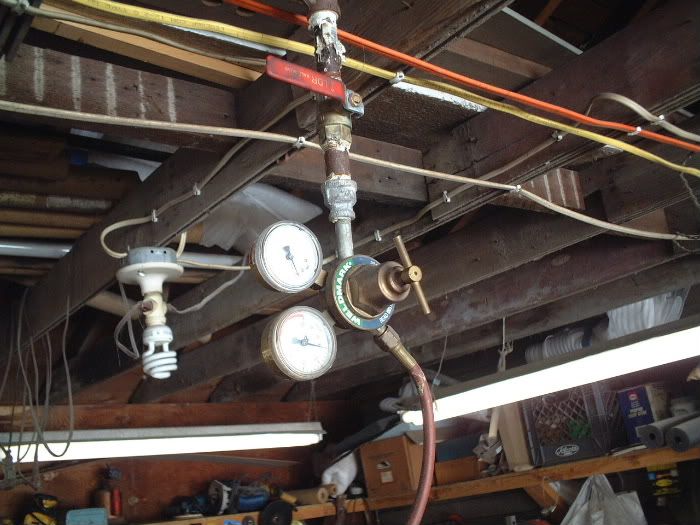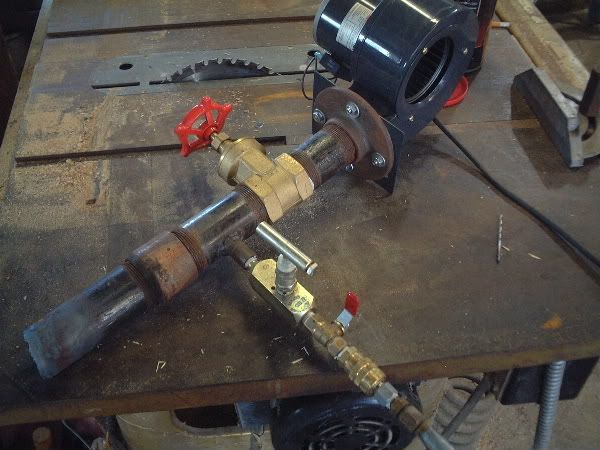Maybe this will help some - the idea behind the numerous regulators is to protect you from that guy 'Murphy', you know, the one who wrote "Murphy's Law": If something can go wrong, it will.
The LAST THING YOU WANT is to have a bunch of feet of gas line running right to your forge area that has FULL tank pressure in it and then have something go wrong! Tank pressures often run about 110 to 120 psi. Can you imagine a flame shooting out of a gas line at that pressure??!!
That's why you want only a few psi in your gas line.
So, I have a regulator at my 100 gallon tank that IMMEDIATELY steps the tank pressure down to I think 9 psi.
Also, note that right above the tank is a shut off valve. Right above the 100# tank inside the shop as well, there's another shut off valve, AND! right above the regulator that goes to the tanks, there's ANOTHER shut off valve. INcase something happens near the forge, like a line breaking or something of that nature, I can leave the forge area and still shut off the fuel supply.
That 100# tank in the shop is my back-up fuel supply if the large tank runs empty.
But in each case, the tanks have a regulator DIRECTLY attached to them so there isn't ONE foot of fuel line with high pressure in it.
Then, at the end, I regulate the fule pressure to the tank at about 4-4 1/2 psi and control my forge with the needle valve. And there's a shut off valve right in front of the needle valve.
I don't want to go up in a big BOOM! and you shouldn't, either.
Everything you need for safe operation is at the link I posted earlier.

























